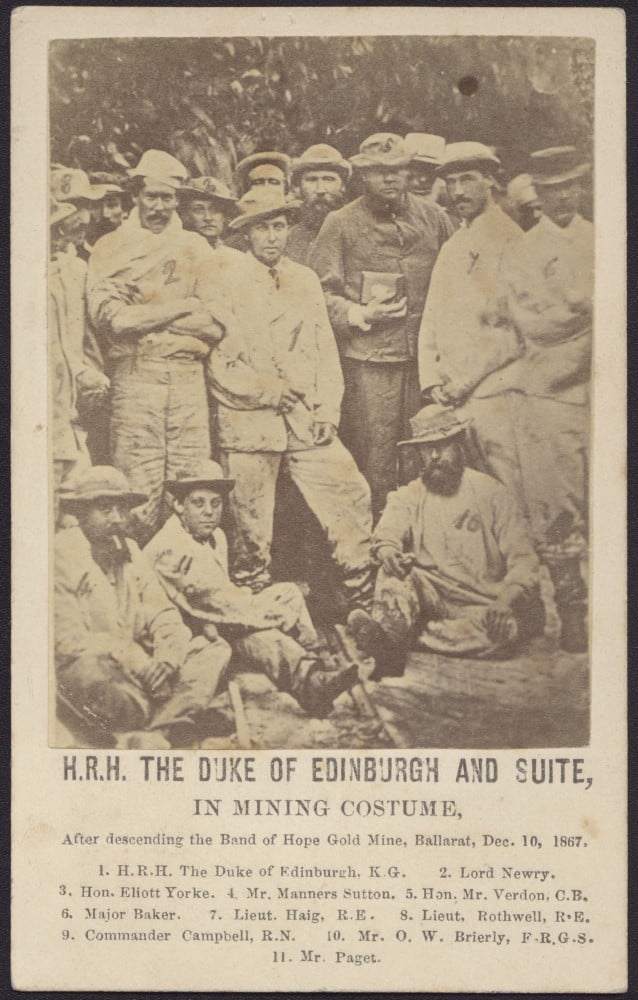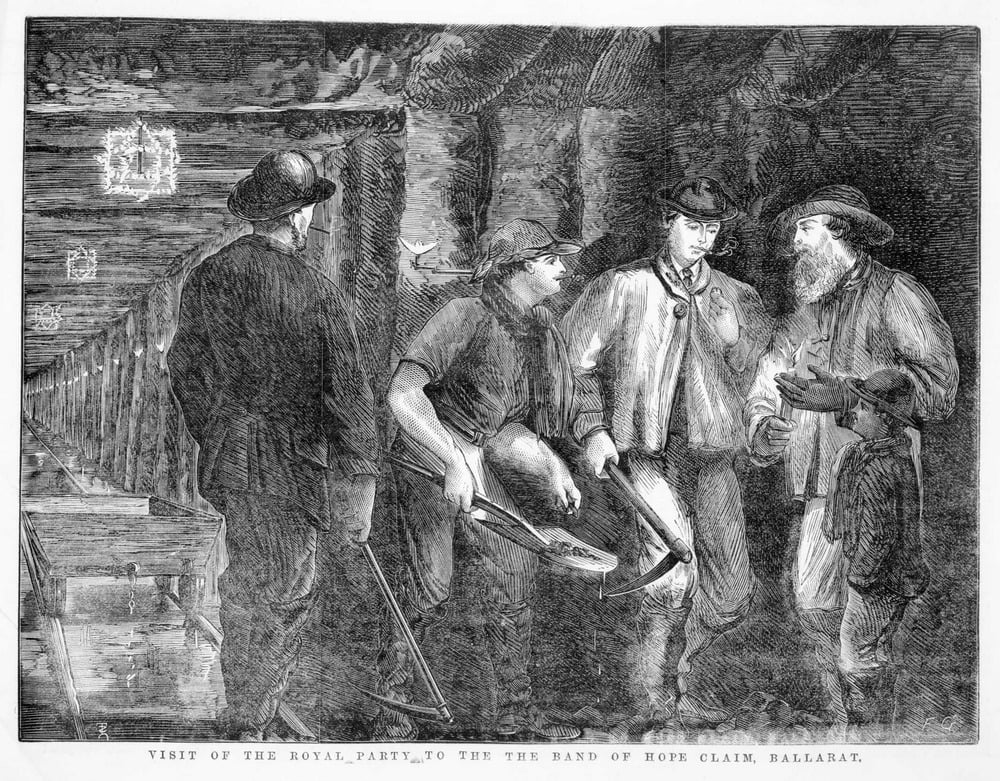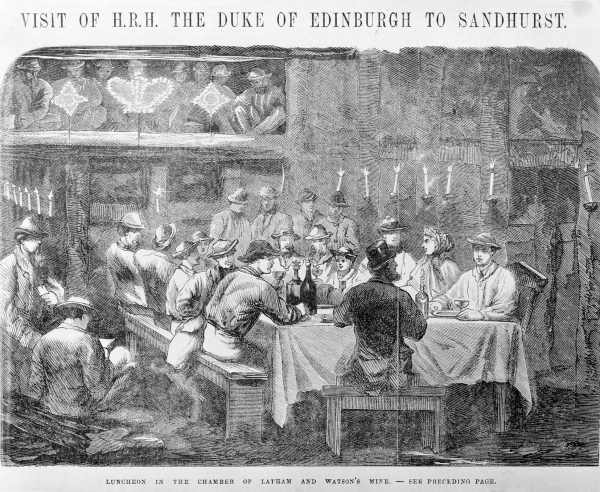The most conservative of commentators would describe the 1867-8 Australian visit of the Duke of Edinburgh as ‘eventful’. Even before the Duke survived an assassination attempt, he raised eyebrows by voyaging down several Victorian mine shafts.
The first of the mine visits went ahead on 10 Dec 1867, when the Duke descended into the Band of Hope gold mine in Ballarat.
H.R.H. the Duke of Edinburgh and suite in mining costume
after descending the Band of Hope Gold Mine, Ballarat, H84.439.
The book Narrative of the visit of His Royal Highness the Duke of Edinburgh to the colony of Victoria, Australia (available online) describes the day:
‘Shortly after two o’clock his Royal Highness arrived at the [Band of Hope mine]. The Prince was met at the gate by the chairman of the board of directors… [who] showed him round the machinery. For his enlightenment four of the machines, which had been kept loaded with washdirt for the occasion, were put in motion, and he was initiated into some of the mysteries of washing up.’
Visit of the royal party to the Band of Hope claim, Ballarat, IAN20/12/67/1
The machinery having been inspected, the Prince and his party prepared to descend the mine. The directors had provided for the royal party a number of suits of clothes, into which they were duly inducted, and then the process of lowering commenced…At the bottom of the shaft, [His Royal Highness] stopped at several points, and with an ordinary pick went to work to dig out for himself some of the treasure which has been so richly scattered by nature throughout this company’s claim. He unearthed several pieces of gold of tolerably large size.
After spending about an hour and a half in the mine, the party were drawn to the surface. With faces begrimed, hands encrusted with mud, and garments all stained with the earth, they looked like ordinary miners emerging from a day’s work…Much merriment was caused by his Royal Highness insisting on every one keeping their dress and their mud on, in order that they might be photographed together’. (1)
After sitting through days of speeches and school children’s displays, it’s little wonder that the Duke relished the chance to behave a little less formally!
Luncheon in the Chamber of Latham and Watson’s Mine, IMP07/12/68/2
Prince Alfred’s visit to Bendigo’s mines was much less fortuitous. The night before he was due to visit the local mines,
‘…when [a parade held in the Duke’s honour] was at its height, an unfortunate catastrophe occurred. The model of the [Duke’s ship] Galatea suddenly rushed through the crowd— its canvas, bulwarks, and wooden decks all a-blaze…the fireworks on board had ignited, and the conflagration was so rapid that all the boys in the ship were more or less burned before they could be extricated. Three who were seriously burned—were at once removed to the hospital, and only survived their injuries a short time. The Prince evinced the liveliest concern for the sufferers on hearing of the sad mishap, and sent Mr. Yorke, his equerry, to the hospital, to inquire how they were progressing.’ (2)
After visits to Mr M E Koch’s Pioneer Crushing Works at Long Gully and…some light refreshments in the heart of the Catherine Reef Company’s mine, ‘the party returned to Sandhurst, where a ball was to take place in the Alfred Hall. However, in a manner befitting the generally disastrous tour, ‘about a quarter of an hour before the time for opening the ball the building took fire, and soon became a heap of ruins’. (4)
In the following years the royals continued to show a fondness for Victoria’s mines. Some fourteen years after the Duke’s visit, his nephews Albert and George (later King George V) arrived at Ballarat’s Band and Albion Consols Company, signed the same visitor book as their uncle, and descended into the depths.
The Princes and suite at Ballarat, 1881, H96.160/254
(1) Narrative of the visit of His Royal Highness the Duke of Edinburgh to the colony of Victoria, Australia, page 126-7
(2) Ibid., page 148
(3) Ibid., page 149
(4) Ibid., page 150
Written by Katie Flack
Collections Coordinator, Australian History & Literature Team






I actually have an original commemorative silk scroll dating back to 1867 when the Prince visited the Ballarat Gold Mines.
Wow that’s just amazing 🙂